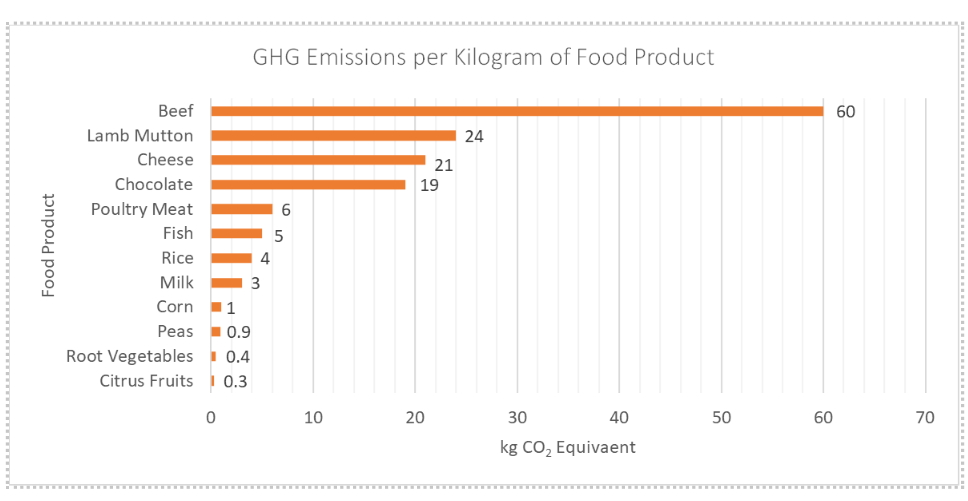
The effort to minimize food waste along its value chain has become more important than ever in light of rising inflation. As the prices sore sky-high, it is important to make use of every bit and bite. Disruptions in the food supply chains and volatility of the global economy has resulted in the rapid rise of global food prices. The Agricultural Commodity Price Index rose by approximately 30% reporting the highest ever increase within a year since Jan 2020 (World Food Programme, 2021).
And yet, 1.3 billion tonnes of food is wasted each year amounting to roughly US$ 680 billion in industrialized countries and US$ 310 billion in developing countries. (Worldwide Food Waste, n.d.). Let’s take a closer look.
How much is wasted and where?
What is alarming to know is that, despite the issues around the unfulfilled demand, food supply generates a significant amount of waste prior to and at consumption. Roughly one third of the food produced for human consumption goes as waste along the supply chain (Food Loss and Food Waste, n.d.). the studies say, where,
- Nearly 14% of total global food production is lost from production up to (and not including) the retail level. (Global Food Losses, 2016)
- While, 17% of total global food production ends up as waste from households, food services and retail. (Tom Quested et al., 2021).
Food production as well as waste treatment costs to the environment
Food waste does not just lead to more hunger, it costs to the environment.
There is already a significant environmental footprint associated with food when it reaches the point of consumption, as nutrients and energy has already been consumed to grow, harvest, refine and process them. Reducing food waste therefore contributes to reduce these impacts.
On the other hand, the way that the Australian bin system operates now, organic food waste and other mixed waste are collected together. This leads to food waste getting entombed in an anerobic landfill or when it degrades, it produces a worse environmental impact than most of the inert material, due to the rapid release of methane (Levis & Barlaz, 2011).
Role of commercial food preparers
The contribution to total food waste by the hospitality sector globally is nearly 12% (Dhir et al., 2020). In the US alone 93% of the food waste generated (18.3 million tons) comes from restaurants and similar food services, where more than half (52%) of this waste ends up in landfills (Wasted Food Report, 2018).
Looking at how to address avoiding and reducing food waste in preparation in the hospitality sector, is critical, as the food wasted has travelled so far by then and is ready for consumption.
Sustainable food preparation goes hand in hand with sustainable food choices and these two together change the way food is demanded, prepared and consumed along the value chain associated with it.
What can food preparers do?
As in most great cuisines, a few little changes to the recipe and ingredients will add a whole new flavour to the meal. Here are a few changes we can make to make our food preparation and consumption more sustainable.
- Know your requirement – and manage the demand
Demand monitoring and tracking and using it forecasting patterns and trends will enable planning out purchases accordingly. Forecasts based on historic sales data and future considerations such as major events and festivals will not only improve utilization but will definitely save costs.
2. Know the food’s footprint – and make correct choices
The inconvenient but the ultimate truth about the environmental footprint of food products come from life cycle assessments (LCA). LCA studies show the difference in food products as well as the impact on where it can be sourced from. Addressing the dilemma whether locally sourced food make a difference at all, the facts say that the impact due to selecting food that have a higher footprint is much greater than shifting to local sourcing.

As an example, red meats like beef produce 60kg of GHG equivalent (GHG-e) per 1 kg of product, whereas for poultry meat it is 6 kg GHG-e and for fruits/vegetables it is <1 kg GHG-e.
“Shifting your choice from red meat and dairy products to chicken, fish, eggs, or a vegetable-based diet achieves more GHG reduction than buying all locally, even if you do it one day a week.” (Weber & Matthews, 2008).
3. Know you menu – and optimize the recipe
There are creative ways to look at conserving food, at the menu design itself, without having to alter the verity of dishes on offer. Providing value to the food parts that are typically unused with a creative menu, have seasonal menus designed to absorb excess supply of a certain type of food, offering variety in the menu by providing half-half choices to discourage consumption of certain items are some of those. Seeking out new opportunities to cross-utilize the different parts of the same ingredient on multiple menu items or designing “food sink” dishes that can absorb leftovers of the last meal, are few of the other ways.
4. Know how packaging matters – and avoid and reduce when possible
Single-use packaging is to be avoided at all cost despite it being made of plastic or any other material. While plastic persists in the environment for some time and have received the biggest attention as a polluting material, other materials such as paper are not better as it has a significant environmental footprint associated with production Purchasing packaging with recycled material , if these are certified as safe for use, will encourage purposeful design of packaging to include recycled products.
However, the best packaging for the environment is the one that is not used.
If you can encourage customers to bring their own reusable packaging and offer benefits for those that follow through such as discounts or special offers, that not only does the best for the environment, but will also entice customers to return.
5. Know what to do with what’s left – and have plans to divert for use, recover, or recycle
Even with all the steps taken to reduce the food waste, some amount of food will be left over or thrown away. But, that does not mean that it needs to end up in a landfill. The options below can be pre-identified while you make plans to minimize waste.
Food donation
Food that was prepared but not sold can be donated to food banks and soup kitchens, and partnering with charity organization will help distribute meals to those in need.
Onsite or Centralized Composting
Onsite composting can be a good option if you have the adequate area and means to perform it. This will lead to reduced or negligible hauling and disposal costs for the waste produced. With an initial investment and an appropriate area requiring for this, the next best would be to divert it to a commercial facility.
Diverting to other places such as animal farms may be an option to explore if such is available in the locality.
Continual Improvement
The goal to achieve zero waste is not just a vision – It is a practical reality if the commitment for continuous improvement remains. The proposition for such improvements is not purely environmental, rather it creates value for businesses. A review of 1,200 business sites across 700 companies in 17 countries found that nearly every site evaluated achieved a positive return, with half seeing a 14-fold or greater return on investment(Craig Hanson & Peter Mitchell, 2017).
At testing times such as this, however invisible it may seem, humanity directly or indirectly competes for resources, and food is one such basic need. Being the privileged to have access to food, there is never a better time to make the best use out of what has travelled in a global value chain to feed us, so that it conserves the produce for many others.